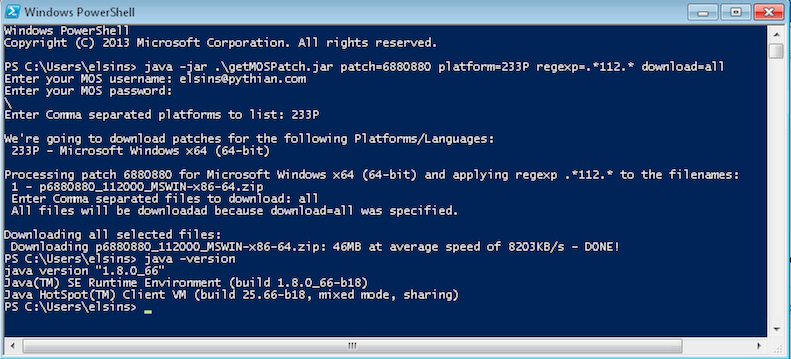-
Achieving Rock-solid Maintenance with Template-based Action Plans
A while ago, I created and started using a tool that helps advancing the maintenance action plans from one testing iteration to another, and finally - to the maintenance activity in production reliably and without introduction of copy/paste or text replacement mistakes. It’s main idea is to allow creating action plan templates that have placeholders instead of environment-specific values, and a spreadsheet that defines all the different values for these placeholders. The final action plan is created automatically with a single click of a button. Interested in doing the same? Read more here on Pythian blog!
-
Just a Serverless Blog Experiment!
This is not really a propper blog post. I’m just experimenting with serverless blog ideas on GCP.
-
The getMOSPatch V2 is Here!!!
Just wanted to let you know that I’ve released the 2nd version of getMOSPatch - a tool for downloading Oracle patches directly from My Oracle Support to your server without having to visit the support site. It’s now written in java and thus it’s platform independent! Read more about it on my Pythian blog post here, and get it directly from GitHub here!
-
Simple Script for Real-Time Wait Event Monitoring
What do you do when you’re dealing with an ongoing performance issue and somebody’s watching over your shoulder and asking something like “Hey, has our commits’ response time become any better by now?”. Or, if you’re observing a spike in IO requests that doesn’t last for too long, and you want to see how much worse the response times of
db file sequential readevents gets? Writing queries at these moments require time which one doesn’t have, so I’ve written a script that I already use in situations like these -
Internals of Querying the Concurrent Requests Queue - Revisited for R12.2
Once upon a time I wrote about the Internal Workflow of an E-Business Suite Concurrent Manager Process. Many things have changed since that blog post, from which the most obvious change was the release of Oracle e-Business Suite R12.2. So, I decided to check if the way how the concurrent manager queues were processed by concurrent manager processes were still the same. My main goal was to see if the manager processes still don’t attempt any way of coordination to distribute the requests among them.
